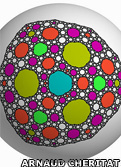This time it was about child rearing techniques. Who knew such interesting research topics could be found in the ladies room?
In any case, an older woman was talking to a younger woman about ways to prevent poor behavior in children called the "extinction technique." The older woman explained that recognized behavior is repeated behavior, so if bad behavior is ignored and good behavior is recognized and rewarded, then it is the repeated behavior. If bad behavior is ignored, then to a child's mind, it didn't happen.
I'm not certain if I agree with that entirely, but it got me thinking about how this might be researched and applied by educators and others who specialize in child development.
I decided to try the ERIC database through the Marriott Library Article Databases.

This database has what I think is the best resources for education available, so I thought it would be a good place to start. To get there, I went to the library home page, clicked on Article Databases & More, and then on the letter 'E' to get to a list of databases that start with that letter. I scrolled down until I got to the one that said ERIC (Ebsco). There are several places to get information from ERIC because it originally from the U.S. Department of Education, but I like working with the Ebsco database vendor interface best.
Once I was in the database, I searched for "extinction technique."
And there they were, articles about exactly what the women in the bathroom were talking about. They ranged from information about how to help children with potentially dangerous self-destructive behaviors to behavior management information for parents using the extinction technique.
Ah, I do love when a good search comes together and I learn something new!












